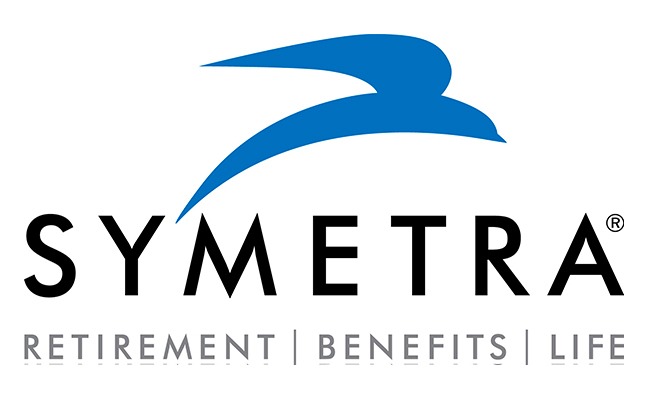Reimagining Retirement in a Post-COVID World
Funding Innovation in Retirement Planning
Determining How To Prioritize Investments in 2021
Context
Over the last five years, the insurance industry has rapidly embraced Insurtech opportunities. Carriers have launched innovation groups, established strategic venture capital funds, and partnered directly with VCs to drive change. Events in 2020 rapidly accelerated the need for innovation, particularly within the retirement savings industry. At the same time, short-term pressure to maintain sales, cut costs, and drive earnings threatened to reduce investment in critical, long-term innovation initiatives.
Our virtual discussion forum
In a virtual forum on November 18, 2020, we explored where we should invest our scarce resources and venture capital to achieve maximum return for the industry. We discussed the problems waiting to be solved, the opportunities presented by the changing landscape, and the obstacles still in our path. We will synthesize the ideas discussed during this event and offer a framework for making smart investments in time, resources, and dollars over the next 18 months in the retirement savings industry.
Current industry landscape
For at least the last 20 years, interest rates, equity market volatility, and administrative costs have driven the overall health of the retirement savings industry.
Interest rates
Many product designs depend on available interest rate spreads to achieve targeted rates of return. The business logic proves to be remarkably simple. Buy bonds with acceptable credit risk at the highest interest rate and pay out benefits at a slightly lower rate to policyholders. In pre-COVID 2019, the benchmark 10-year treasury, however, had already dropped to historically low rates and began to apply tremendous pressure on carriers. In 2020, the 10-year Treasury plunged at one point to a jaw-dropping 0.52%.1 If this extremely low interest rate environment continues for an extended time, carriers will find it challenging to offer even simple fixed annuities with meaningful consumer value.
Market volatility
To varying degrees, many retirement insurance products include some guarantees, directly or indirectly, linked to market growth. To achieve targeted rates of return, carriers have to hedge market risk by actively purchasing equity options. As market volatility increases, so do the costs of the options themselves. In March 2021, the CBOE Volatility Index (VIX) reached a level unseen since the 2008 financial crisis.2 For the remainder of the year, volatility has remained at a historically high level.
Administrative costs
Many retirement savings products, such as 401(k)s and variable annuities require complicated administration and a high volume of service requests. Over the past 20 years, the 401(k) industry has rapidly consolidated as the available fees from underlying funds have declined. Similarly, the decline in interest rates and higher cost of options has created significant stress on the ability of carriers to support sub-scale service centers and administrative services.
Over the last five years, the insurance industry has rapidly shifted towards an outsourced service model. However, the rapid evolution and fierce competition in the annuity market over past 20 years greatly complicates outsourcing efforts. The wide variety of plan features and functions makes conversions very slow and exceptionally difficult to capture intended savings.
Changes driven by COVID
Even in the face of the pandemic, demand for the benefits of retirement savings product remains strong. In 2020, Google search trends related to the broad retirement topic actually reached the highest level since 2004. We could potentially attribute this to the massive unemployment caused by COVID-19 and the fear of forced early retirement.
However, every day 10,000 people still turn 65. By 2050, 20% of our U.S. population will be over the age of 65. Demand will naturally grow each year.
Annuity sales did drop a reported 6% across the industry through the end of Q3 2020. In large part, observers attribute the drop to business model changes that required the industry to work in a socially distanced environment. Carriers had to rapidly restructure operations to process new business with an entirely remote workforce.
To add, Harry Monti, of Symetra, said "Some changes in the workforce, due to job loss and economic pressures, may change the way we have to interact with the consumer." Third-party vendors in other parts of the globe had to deploy matching technology in areas without high- speed internet in homes. Regulators had to modify requirements to allow remote meetings and digital signatures with consumers.
Many advisors and producers have struggled to generate sales in a socially distanced environment. We have witnessed a barbell distribution of performance across our agent population who primarily sell fixed indexed annuities. A small number of agents report record sales for the year so far. Some of those had successfully embraced remote engagement tools like Zoom prior to the pandemic.
Others had very defined markets and established source of leads that persisted through the crisis. The vast majority, however, have struggled to maintain sales volume because they can’t hold seminars, host dinner meetings, or meet in client homes at the pace they did
in 2019. In part, this probably explains why sales of fixed indexed annuities have dropped 19% YTD in 2020.
At the same time, the digital habits of seniors have changed dramatically since March. We already knew that seniors comprised the fastest growing audience for Facebook. We have not found longitudinal studies that demonstrably measure the rapid shift since March. Anecdotally, we find that large numbers of churches across the country conducting livestream services have quickly trained seniors how to use video conferencing tools like Zoom and families have trained their older parents on how to use video cameras.
We have witnessed seniors joining video client appreciation calls with ease. We also regularly engage with seniors in online chats on our website. Given the rapid use of the internet to order needed goods and services, the idea of making a $100,000 investment over the web now seems very plausible.
Venture investment trends
Most reports track venture investments in P&C and life & health. The retirement industry has not yet merited its own category. Why have we not observed more venture investment in the retirement space? First, many founders find problems to solve based on their own personal experiences. Beyond contributing to a 401(k), most individuals don't begin to seriously plan for retirement until their fifties. Second, the timeline for proving the viability of a new solution for a retirement planning solution may prove too long for the horizon of typical venture capital investors.
For investors like IA Capital, the prospect of the future opportunity seems to outweigh the concerns. "One of the reasons that my firm is so bullish on investing in Insurtech is because there is tremendous opportunity in the future. We believe that insurers have under invested in this sector in the past," said Andy Lerner.
Leading 2020 investment themes
We pushed the envelope at our forum and identified a number of large problems that startups could potentially solve. We divided the problems into three broad segments of our industry – distribution, product, and operations.
Distribution
Workplace planning — Historically, the workplace has proven to be one of the most efficient ways to provide benefits for workers. Can new technology capitalize on the opportunities that the SECURE Act created for retirement planning for employees?
Retirement planning engagement
Consumers need help solving complicated issues related to retirement. As Rich LaVoice of Symetra stated, "There is a huge need to educate the public on the value of the benefits of retirement products and this can be done in part by marketing." Can digital tools create more efficient engagement that leads to action?
Agent productivity — Retirement planning is complex even for trained advisors. In addition, the wide range of products needed in a comprehensive plan requires significant training. Cole Riccardi of Aquiline observed, “Products within life and health are still sold vs. bought. To make agents more efficient, we should consider embedded distribution of insurance.” Can technology and new sources of consumer engagement enable an individual advisor to deliver a more comprehensive solution in a more efficient manner?
Wholesaler support — The need for product training, marketing support, and supported presentations with clients only grows larger each year. Can technology allow wholesalers to provide better support to advisors and their clients across the country?
Lead generation — Even before the pandemic, agents and advisors struggled to find new retirement planning clients in a world of “do not call” lists, unsubscribes from emails, and stuffed IRL (“in real life”) mailboxes.
In a world with a shrinking number of agents but greater client demand, can we more efficiently connect consumers in need with professional agents and advisors?
Life events analytics — Life event analytics have powered the life insurance business for years. The industry has solved how to target couples about to have children or buy a house. Can better sources of data better identify life events linked to retirement planning, like children graduating from college and early loss of job?
Product
Product simplification — Retirement savings products like annuities are incredibly complex to explain in a real-life setting. As Kathy Fuertes of Infosys shared, “From the customer lens, it's all about simplifying the complex.” Can we dramatically simplify them for easier explanation and increased comprehension?
More efficient products — Today's individual annuity sale averages over $100,000 per contract. Can new administrative platforms and distribution platforms effectively sell much smaller contracts with significantly lower fees?
Longevity analytics — To date, the annuity industry has not underwritten applicants like the life insurance industry. Can new data allow the industry to better price products or create new products that enhance the use of inherent mortality credits?
Aging in place – Health care is the biggest expense confronted by most retirees. Dave Miles of Manchesterstory stated, "There is a real desire to feel more confident and more in control in terms of healthcare decisions and independent living decisions." Can technology allow seniors to safely age in place and effectively reduce the amount of income they need in retirement?
Operations
Portfolio management — Investment advisors face daunting challenges when managing custom asset portfolios in both the accumulation and decumulation phases. Can new platforms radically improve the process and result in more compliant outcomes?
Annuity applications — The biggest change for the application process in the annuity business in the last 20 years was porting paper applications into fillable pdfs. Can't we create apps that make the process as easy as ordering a television on Amazon for agents and consumers?
Suitability review — Regulators continue to apply higher levels of responsibility each year on advisors and carriers to review the suitability of each application, transaction, and portfolio. Can technology create more efficient and consistent review of human recommendations and decisions?
Middle/back office operations — The industry needs to find ways to more cost efficiently manage the high level of transactions involved in retirement planning and product management. Can we find solutions that remove costs, speed transactions, and reduce errors?
Benefit payments — People will start making long-term care claims and filing for guaranteed income payments in great numbers each year. What improvements can we make in the claims administration and processing steps?
Greatest risks
We cannot end a discussion on investment opportunities without identifying potential risks. The major unknown factors that could impact these themes include:
1) How long will rates remain low and market volatility stay high? As long as rates remain low, venture investors will remain leery about investing in spread-dependent sectors like simple fixed annuities. Similarly, any new venture that depends on low market volatility will likely not receive funding in the near term.
2) Will the government rewrite any sectors with the “stroke of a pen”? The new administration could pass major legislation that would change Medicare and Social Security. Should this happen, every part of the business could change.
3) What parts of the economy will COVID permanently change? Once the pandemic ends, we may be surprised what behavior continues and what does not. We assume that digital engagement will play a much more important role in retirement planning, product commercialization, and introductions to investors.
Appreciation
We want to thank our distinguished panel for framing the discussion:
We also want to the thank all the retirement industry leaders who joined us for this event and shared their unique insight on problems to solve and their investment opportunities. Also, this event could not have occurred with the leadership of Laura Dinan Haber, Program Manager of Nassau Re/Imagine, Ramsey Smith, Founder and CEO of ALEX.fyi, and the marketing team of Nassau Financial Group. Support and funding comes from Nassau Financial Group, Launc[H] and Symetra.
About the Author
Paul Tyler serves as the Chief Marketing Officer for Nassau Financial Group. He leads the branding, marketing, and digital engagement for the company. He founded the incubator Nassau Re/Imagine in 2020 as a place to help companies create the future of insurance today.
About Re/Imagine
Nassau Re/Imagine serves as incubator for companies intending to build a presence in Hartford. We actively support individuals and team committed to building a vibrant insurtech ecosystem in the heart of our insurance community.
Forum Series Sponsors
Opinions expressed in this document reflect only those of participants and do not necessarily express the views or opinions of their employers or our sponsors.
Symetra® is a registered service mark of Symetra Life Insurance Company.
1 U.S. Department of the Treasury, see https://www.treasury. gov/resource-center/data-chart- center/interest-rates/Pages/TextView. aspx?data=yieldYear&year=2020
2 Google Finance, INDEXCBOE: VIX, https://www.google.com/finance/quote/VIX:INDEXCBOE?sa=X&ved=2ahUKEwjf4qOLyqPtAhUxw1kKHZ4OCwgQ3ecFMAB6BAgCEBk
 NASSAU REIMAGINE
NASSAU REIMAGINE







![Launc[H] Launc[H]](https://imagine.nfg.com/wp-content/uploads/2021/07/launchartford.jpg)

